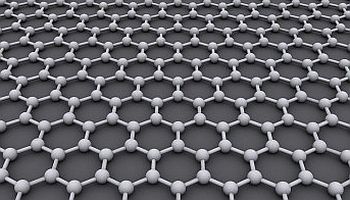Graphene Paves Way To Next-Generation Batteries

A UCLA team has demonstrated how graphene manufactured using a consumer-grade DVD player could be used to create high-capacity, flexible batteries
Researchers at the University of California, Los Angeles (UCLA) have demonstrated a new potential usage for wonder-material graphene: high-performance, flexible capacitors that could replace batteries for portable electronics and solar cells.
The UCLA team, led by graduate student Maher El-Kady and supervised by professor Richard Kaner, used an exceptionally simple fabrication technique, literally burning the graphene samples inside of a consumer-grade LightScribe DVD burner.
Stable fabrication process
The fabrication process is important because up to now stable samples of graphene have proven difficult to manufacture.
Graphene is a sheet-like, two-dimensional material with a thickness of one carbon atom that is the most conductive substance yet discovered. A variety of potential applications have been developed for graphene and it is expected by some to replace silicon as the primary material in electronic devices.
The UCLA team used its fabrication method to produce a graphene-based supercapacitor, also known as a high-density electrochemical capacitor, which stores energy like a battery but can be charged and discharged several orders of magnitude more quickly.
 Researchers placed a layer of plastic on a DVD and then applied a layer of graphite oxide. This was etched by the DVD burner’s laser into graphene. They then removed the graphene-bearing plastic layer and cut it into the desired shape.
Researchers placed a layer of plastic on a DVD and then applied a layer of graphite oxide. This was etched by the DVD burner’s laser into graphene. They then removed the graphene-bearing plastic layer and cut it into the desired shape.
The supercapacitor was formed by an electrolyte, phosphoric acid, in between the two layers of graphene.
Faster charge
The graphene supercapacitors store as much charge as conventional batteries, but can be charged and discharged 100 to 1,000 times faster, while being highly stable, according to UCLA.
“Moreover, (they) maintain excellent electrochemical attributes under high mechanical stress and thus hold promise for high-power, flexible electronics,” UCLA stated.
El-Kady said the devices could be used to provide power supplies for wearable electronics and energy systems for flexible solar cells, amongst other things.
He said the team will next work on demonstrating how its production techniques can be scaled to a commercial level.
The British government is currently backing a drive to commercialise graphene with around £50m going towards a national institute of graphene research and commercialisation.
Other recent graphene research has focused on graphene transistors, self-cooling materials and Internet acceleration.
How much do you know about microprocessor technology? Test yourself with our quiz.